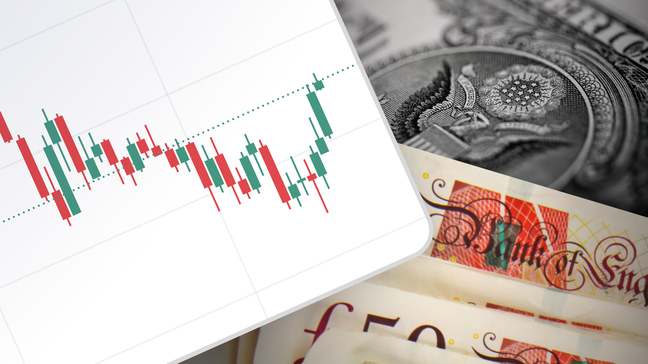Trading sentiment remains dicey early Monday as most of the Asian markets are off due to the Lunar New Year holidays. Also keeping traders on the edge is a lack of major data/events, as well as the cautious mood ahead of this week’s US inflation and the UK’s data dump, not to forget speeches from the key central bankers around the globe.
With this, the US Dollar traces a pullback in the yields, especially due to the cautious optimism in the equity markets. The same allows EURUSD and GBPUSD to extend Friday’s corrective bounces ahead of this week’s top-tier data/events. However, prices of commodities remain directionless amid the holiday season in one of the world’s biggest commodity users, namely China.
Even so, NZDUSD dropped the most while ignoring hawkish comments from the RBNZ officials while the AUDUSD and USDCAD lack momentum. That said, holiday in Japan restricts JPY moves but downbeat yields allow the Yen pair buyers to take a breather.
Elsewhere, BTCUSD prints minor losses after posting the biggest weekly gains since late October while the ETHUSD lacks clear directions following a two-week uptrend. It should be noted that the technical breakout joins optimism in the crypto market to keep the Bitcoin and Ethereum prices firmer.
Following are the latest moves of the key assets:
- Brent oil posts minor gains at the two-week high above $82.00 marked the previous day.
- Gold price prods a three-day losing streak while flirting with a two-month-long support line surrounding $2,020.
- USD Index stays pressured near 104.00 while posting mild losses after a four-week uptrend.
- Wall Street closed with minor gains but the Asia-Pacific stocks edged higher. That said, shares in Europe and the UK print mild losses during the initial hour of trading.
- BTCUSD prints mild losses at the monthly high near $48,800 by the press time while ETHUSD retreats to $2,500 as we write.
A slower start to the US inflation week…
Although the Greenback remains pressured on a day, the US Dollar Index (DXY) posted a four-week uptrend in the last, despite the late last week’s retreat from a monthly high. The main catalyst behind the USD’s strength was the market’s conviction of a delay in Fed rate cuts. Also keeping the DXY on the bull’s radar are geopolitical tensions in the Middle East and China’s equity rout. With this, the greenback’s gauge versus seesaws around the 104.00 mark as traders await this week’s key US inflation numbers for January. The figures gain importance as Friday’s revision of 2023 inflation data failed to impress the US Dollar bulls and Federal Reserve (Fed) Chairman Jerome Powell mentioned the revised figures to be the key to deciding the Fed’s rate cuts in 2024. On Friday, the key to the Fed’s inflation matrix, namely the Core six-month annualized CPI, was revised down to 3.0% from 3.3% while the December figures were eased to 0.2% from 0.3% prior.
In their latest public comments, Atlanta Fed President Raphael Bostic told NPR that inflation has been too high for too long, which in turn pushed back the odds of witnessing the Fed rate cuts so soon and allow the US Dollar to remain firm. However, a pullback in the yields and the record-high closing of the S&P 500 checked the greenback buyers ahead of this week’s Consumer Price Index (CPI) data for January. Not only the Fed’s Bostic but Dallas Federal Reserve President Lorie Logan was also hawkish as she ruled out any urgency to adjust rates.
Elsewhere, the mixed headlines from the Eurozone also challenged the US Dollar bulls despite keeping the USD on the bull’s radar. That said, the bloc’s policymakers reached a tentative agreement on various fiscal rules to contain the government debt, which in turn ease pressure on the higher rates and can allow the ECB to defend the rates a bit longer. However, the final voting is left pending for this week to check. On the same line, ECB policymaker Martins Kazaks defended the hawkish monetary policy while stating that he is not optimistic about spring rate cuts. Furthermore, ECB policymaker and Spanish central bank head Pablo Hernandez de Cos said the March projections are critical for a decision to cut rates.
Alternatively, European Central Bank (ECB) board member Fabio Panetta mentioned that the time for an interest rate cut is "fast approaching" while policymaker Francois Villeroy de Galhau said that the ECB will probably cut rates this year.
Bank of England (BoE) policymaker Jonathan Haskel said more evidence was needed on inflation before stopping high-interest rates, which in turn allowed GBPUSD to pare weekly loss ahead of this week’s key British statistics.
Meanwhile, Reserve Bank of New Zealand (RBNZ) Governor Adrian Orr and Deputy Governor/General Manager Financial Stability Christian Hawkesby crossed wires early Monday. Both the policymakers defended the RBNZ’s hawkish moves and showed economic optimism. However, the NZDUSD traders took the speeches with a pinch of salt and pared the previous weekly gains, the first in four.
- Strong buy: USDCAD, USDJPY
- Strong sell: Crude Oil, US Dollar, GBPUSD
- Buy: BTCUSD, ETHUSD, Nasdaq, Gold
- Sell: DAX, FTSE 100, BTCUSD, AUDUSD, EURUSD
BoE’s Bailey, Fed’s Kashkari and risk catalysts eyed…
While the day-start trading has been mostly sluggish, comments from BoE Governor Andrew Bailey, Minneapolis Federal Reserve’s president, Neel Kashkari and the risk catalysts like updates about yields and equities will entertain the intraday traders. It’s worth noting, however, that major attention will be given to Tuesday’s US inflation data and Wednesday’s British inflation numbers and the Eurozone Q4 GDP. Above all, the absence of China from markets will allow the counter-trend traders to take a risk and the same could weigh on the US Dollar, allowing riskier assets like commodities and Antipodeans to pare the recent losses.
May the trading luck be with you!




